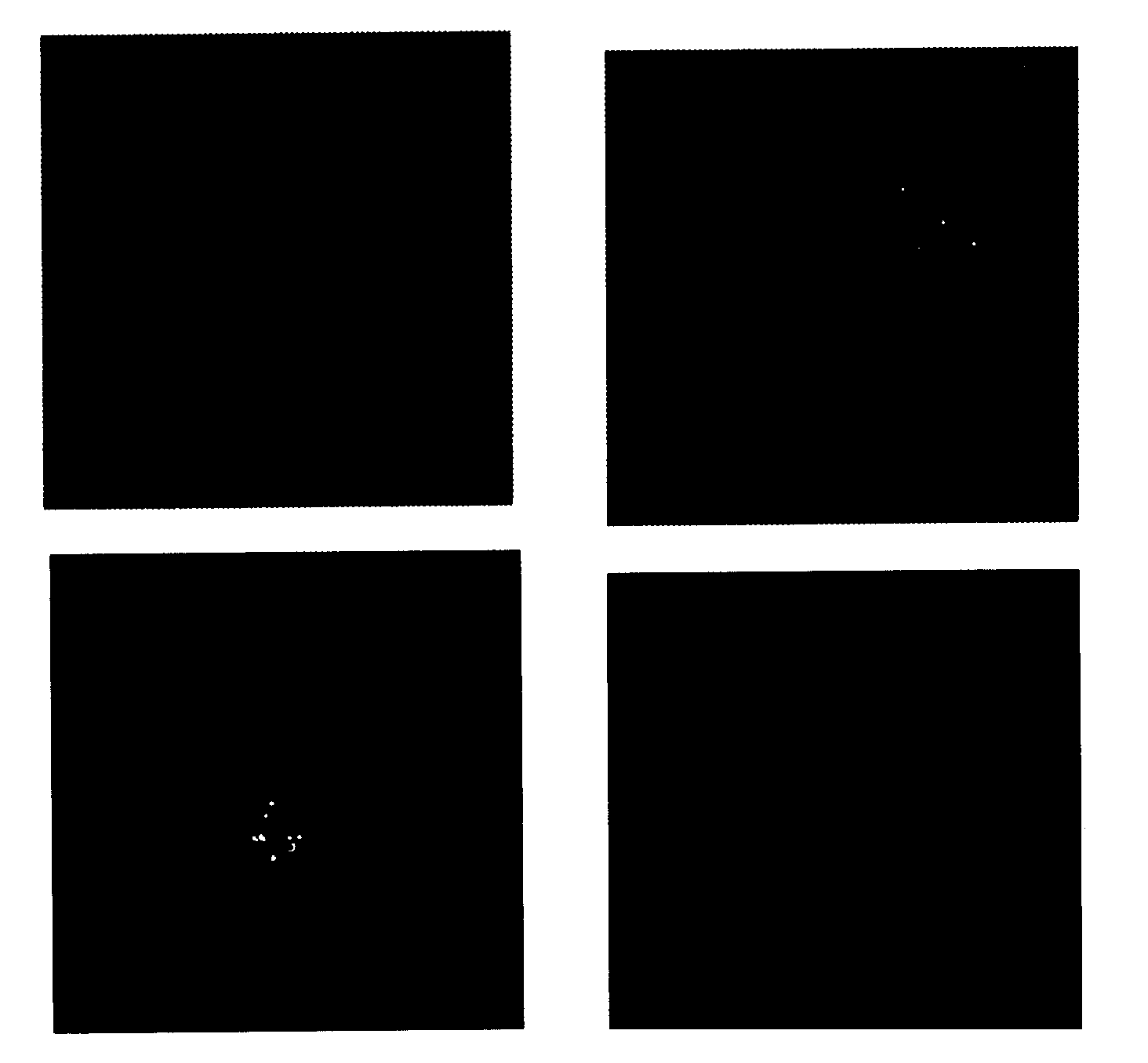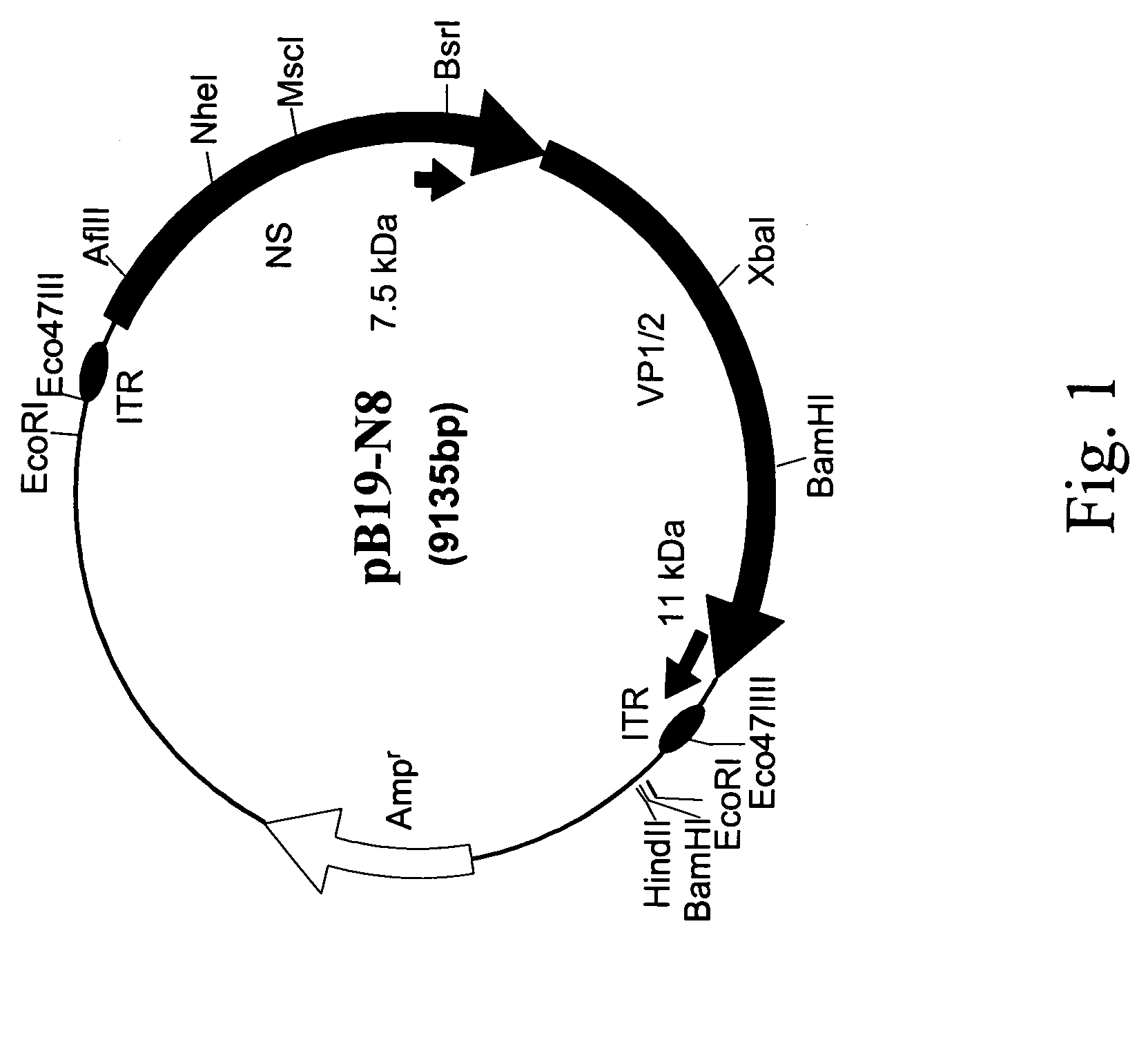Infectious clone of human parvovirus B19 and methods
a parvovirus and infection technology, applied in the field of infection clone of human parvovirus b19 and methods, can solve the problems of unknown itrs in the viral life cycle of parvovirus b19, and achieve the effect of reducing the size of the vector and eliminating undesired restriction sites
- Summary
- Abstract
- Description
- Claims
- Application Information
AI Technical Summary
Benefits of technology
Problems solved by technology
Method used
Image
Examples
example 1
Cloning and Sequencing of Parvovirus B19 Isolate J35
Introduction
[0132] The nucleotide sequence of B19 was originally established by sequencing a viral isolate designated pvbaua obtained from the serum of a child with homozygous sickle cell disease (Shade et al. 1986, J. Virol., 58: 921-936). Subsequently, many B19 isolates have been sequenced by multiple methods (Erdman et al. 1996, J. Gen. Virol., 77: 2767-2774). Following alignment of the sequences, there is a 6% divergence amongst the various isolates (Heegaard& Brown, 2002, Clin. Microbiol. Rev., 15: 485-505). The single nonstructural protein (NS1) gene is highly conserved, and the two capsid proteins, VP1 and VP2, occasionally have a greater variability of 2-3% (Hemauer et al. 1996, J. Gen. Virol., 77: 1781-1785; Mori et al. 1987, J. Gen. Virol, 68: 2797-2806).
[0133] There is no animal model for B19, and virus can only be grown in culture with difficulty (Heegaard & Brown, 2002). Parvovirus B19 exhibits a selective tropism ...
example 2
Construction of B19 Clones
Introduction
[0142] There has only been one previous report of the intact ITRs of the human pathogenic parvovirus B19 (Deiss et al., 1990). In Deiss et al., the genome was cloned in two halves, and the sequence of the ITRs obtained. However, Deiss et al. were not unable to successfully ligate the two halves of the genome together nor could they confirm that the ITRs were correct by functional studies. Other attempts to produce an infectious clone were also unsuccessful due to deletions in the ITR sequences (Shade et al., 1986) and the instability of the ITRs in bacterial cells. Our attempts to construct a full-length clone by ligating the ITR sequences to pB19-N8 were repeatedly unsuccessful.
[0143] In the present examples, we successfully clone the full-length B19 genome using low incubation temperatures and Sure®2 competent E. coli cells (Strategene, La Jolla, Calif.) that are deficient in major recombination genes. B19 packages equal numbers of both po...
example 3
Introduction of Mutations into A B19 Infectious Clone
Introduction
[0149] As an experimental control, a second infectious clone was produced. This clone was generated to have the same nucleotide sequence as plasmid pB19-4244, except for a single nucleotide substitution to confirm that the infectious clone could generate infectious virus. The production of an infectious clone and the ability to manipulate the plasmid will allow the genome to be studied more systematically.
Method
[0150] A second infectious clone was produced by site directed mutagenesis. The cytosine at position 2285 (B19-J35 isolate) was replaced with a thymine to generate a recognition site for restriction enzyme DdeI to produce a naturally existing variant of B19 (B19-Wi isolate, GenBank M24682; SEQ ID NO:26). The full-length plasmid pB19-4244 was cut with NheI and the 5′ overhang filled in using T4 polymerase. The linearized plasmid was redigested with XbaI, the B19 fragment (from nucleotide 1247 to 3423 in the...
PUM
| Property | Measurement | Unit |
|---|---|---|
| Temperature | aaaaa | aaaaa |
| Temperature | aaaaa | aaaaa |
| Temperature | aaaaa | aaaaa |
Abstract
Description
Claims
Application Information
 Login to View More
Login to View More - R&D
- Intellectual Property
- Life Sciences
- Materials
- Tech Scout
- Unparalleled Data Quality
- Higher Quality Content
- 60% Fewer Hallucinations
Browse by: Latest US Patents, China's latest patents, Technical Efficacy Thesaurus, Application Domain, Technology Topic, Popular Technical Reports.
© 2025 PatSnap. All rights reserved.Legal|Privacy policy|Modern Slavery Act Transparency Statement|Sitemap|About US| Contact US: help@patsnap.com



